Heady wines, heady times
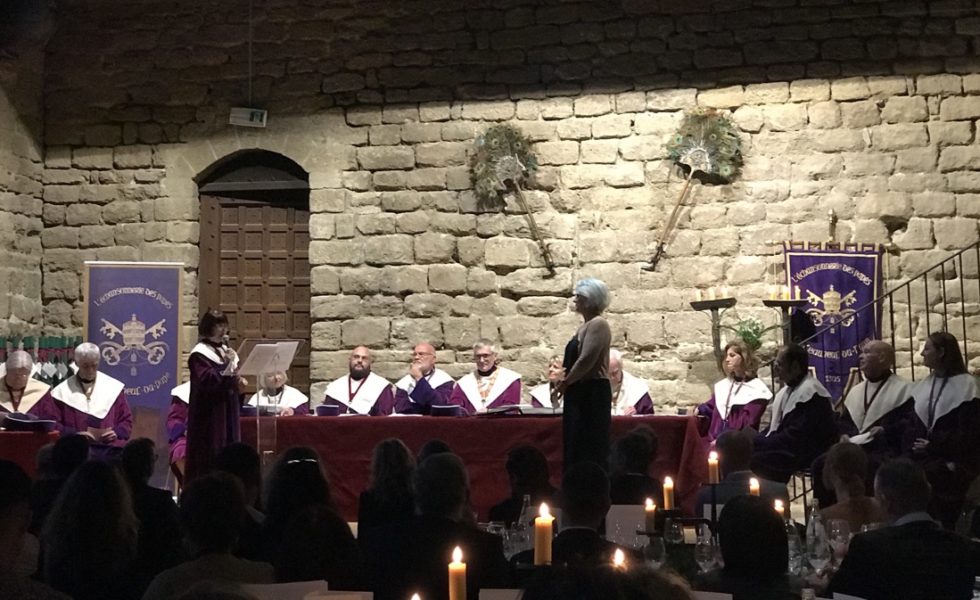
Climate change and the enduring appeal of Châteauneuf du Pape
By Panos Kakaviatos for wine-chronicles.com
26 June 2019
A joyful ceremony earlier this month to induct 15 new ambassadors to the official fraternity of Châteauneuf-du-Pape – the Eschansonnerie des Papes – ended with soulful singing in the local Occitan dialect.But not before participants gathered in the restored cellar section of the ancient Châteauneuf du Pape castle to enjoy a delicious dinner with opulent reds from the famous southern Rhône wine region, served Middle Age style from amphorae (see video).
Established in 1968, the Eschansonnerie des Papes now counts some 3,500 Eschansons, or ambassadors, who are not only wine industry representatives and restaurateurs, but also individuals from all walks of life.
They are chosen for induction into the club, after proving their passion for Châteauneuf du Pape, which is known partly for permitting a blend of 13+ different grapes (see section below on authorized grapes) that have been authorized for the appellation since the 1930s. The ambassadors include artists and athletes, musicians and entrepreneurs. Last year for example, Yahoo founder Jerry Yang was inducted. For the 15 June ceremony this year, Wine Advocate critic Joe Czerwinski and Costco wine buying director Annette Alvarez-Peters (both pictured below) counted among the new Eschansons.
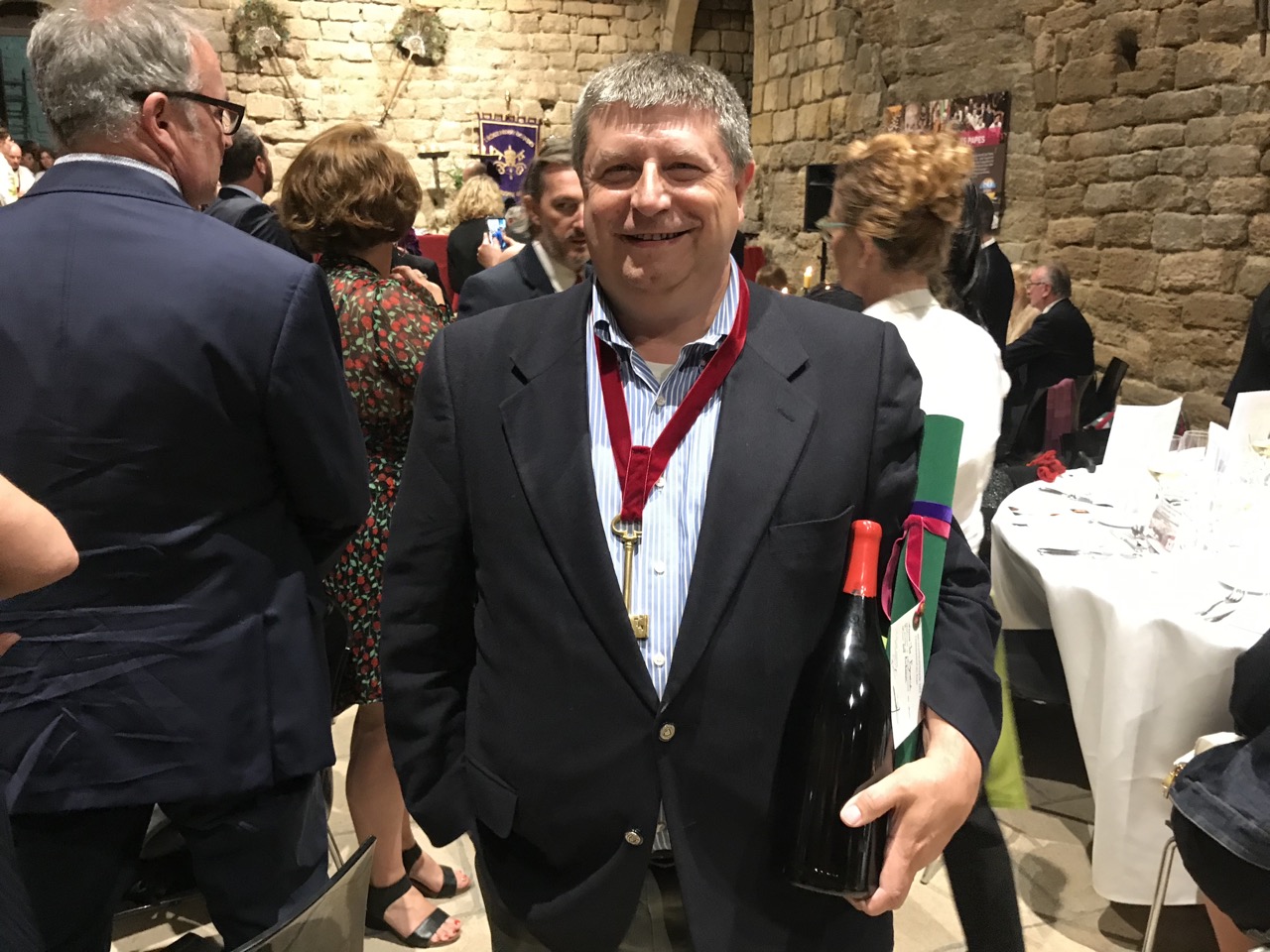
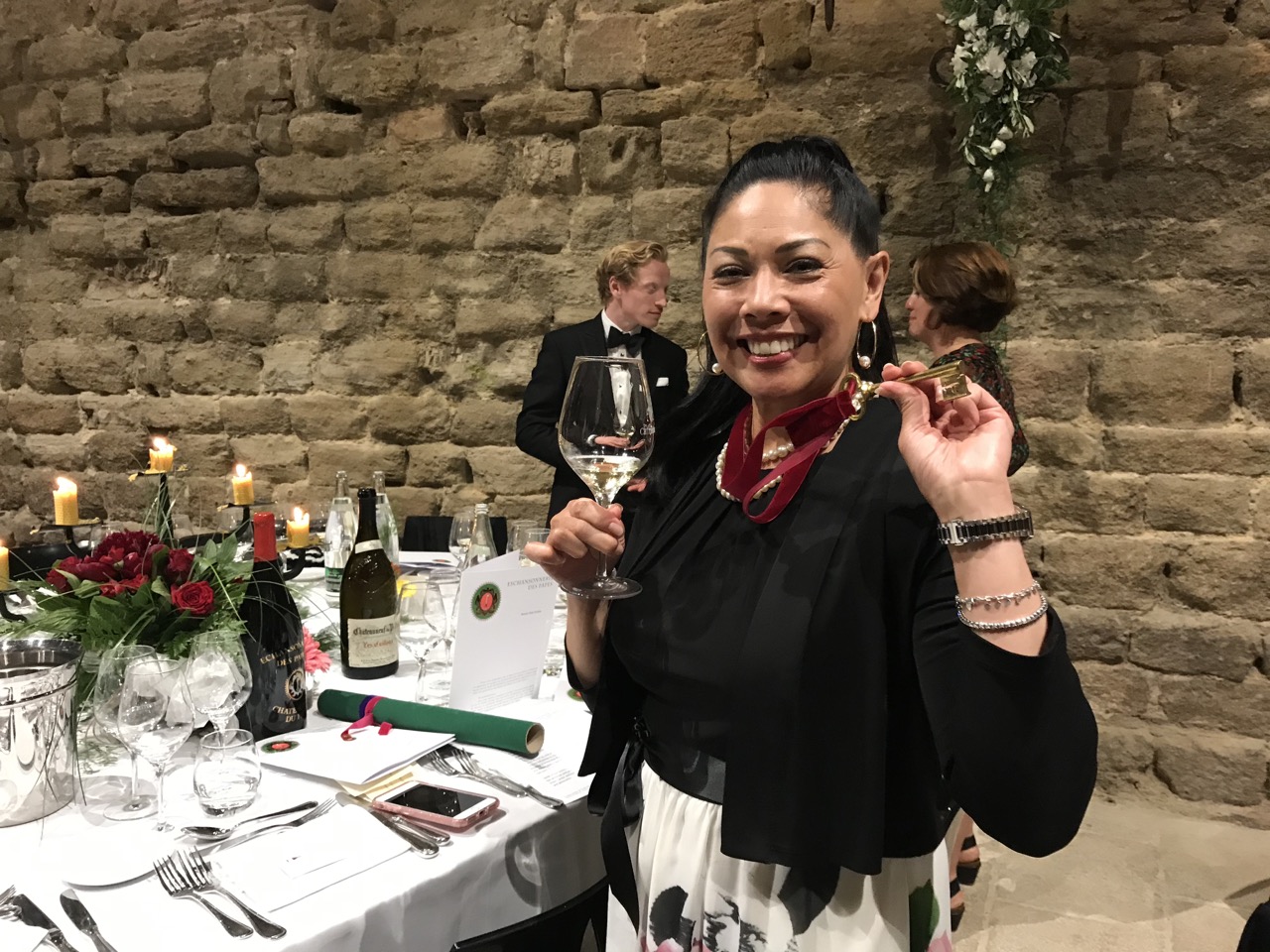
Participants sang along to the fraternity anthem, La Coupo Santoor (“The Holy Cup”), which is printed in the menu in French and in the Occitan dialect, as La Cansoun de la Coupo. The refrain – below – strikes metaphorical significance today.
E versanto, Vuejo à plen bord, Vuejo abord, Lis estrambord, E l’enavans di fort !
And overflowing, May you pour abundantly, May you pour in streams, The enthusiasm, And the energy of the strong !
Indeed, the wines of Châteauneuf-du-Pape have become richer and headier in recent years, partly due to climate change, which is raising some concerns among vintners about the need to preserve balancing freshness as climate change progresses. Alcohol labels, as indicated on labels, are sometimes seen at 16% in recent years. And that is just the official indication.
One method to maintain freshness, as you can see in my video below, is lowering the percentage of the main grape Grenache – which ripens easily and reaches ever-higher degrees of alcohol – with red varietals like Counoise. Thomas Perrin of the famous Château de Beaucastel explains: “It has a big advantage as a late-ripening grape, and it suffers less from the heat of the sun in the summertime than Syrah or Grenache.”
As climate change makes spring weather less predictable, as well, winemakers like Paul Avril of Clos des Papes have been gradually upping the percentage of Mourvèdre, which is not as fragile as Grenache during the flowering period.
Already authorized since the appellation was founded in the 1930s, blending white wine is seeing renewed interest, says Michel Blanc, president of the federation Châteauneuf-du-Pape producers. Some estates, such as Domaine de Beaurenard, have been using white grapes for some of their red wines already.

Victor Coulon
The trend is catching, as rising alcohol levels make it “clearly important” to consider adding white grapes into blends for balancing acidity, says estate co-owner Victor Coulon. Picpoul and Picardin for example add low levels of alcohol and “fine acidities” to the blends, he explains.

With the keys to the cellar!
Amidst the talk of climate change, the ambiance was festive and fun. The setting for the Eschansonnerie des Papes reminds us that Châteauneuf-du-Pape has weathered many a storm. The castle has witnessed much turbulent history, from the wars of religion throughout the Middle Ages, to World War II, when the Germans used it as an arms depot and observation post. As Allied armies advanced towards their position, the château garrison blew up the arms and munitions before leaving in late August 1944, destroying the entire northern part of the château. Only the cellars and the south side of the keep remained intact.
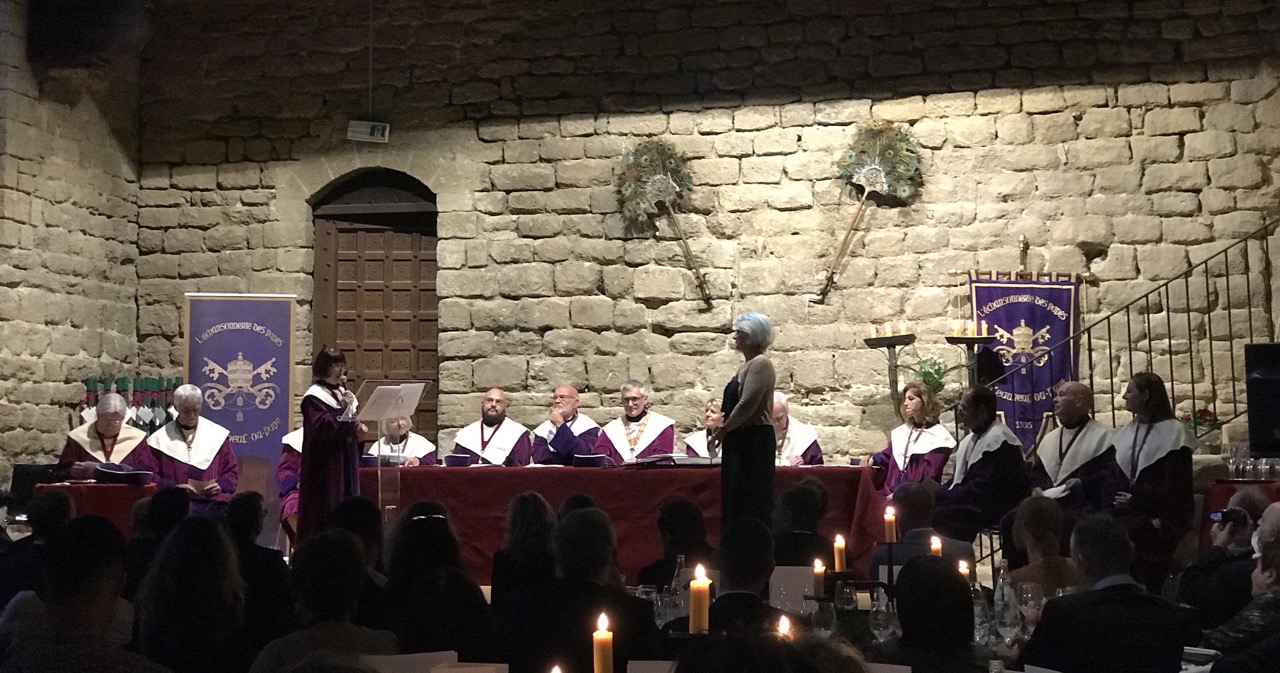
Quite the ceremony
Set among the vines from nearby terraces and hillsides of Châteauneuf du Pape, the candlelit dinner honored the new Eschansons for the appellation, confident in the enduring appeal of this great red wine.
Grapes authorized: 13 or 18?
Châteauneuf-du-Pape is traditionally cited as allowing 13 grape varieties to be used, but the 2009 version of the AOC rules list 18 varieties, since blanc (white), rosé (pink) and noir (red) versions of some grapes are now explicitly listed as separate varieties. Also in the previous version of the appellation rules, Grenache and Picpoul were associated with different pruning regulations in their noir and blanc versions, bringing the number of varieties previously mentioned from 13 to 15.
Red varieties allowed are Cinsault, Counoise, Grenache noir, Mourvèdre, Muscardin, Piquepoul noir, Syrah, Terret noir, and Vaccarèse (Brun Argenté). White and pink varieties are Bourboulenc, Clairette blanche, Clairette rose, Grenache blanc, Grenache gris, Picardan, Piquepoul blanc, Piquepoul gris, and Roussanne.
But Michel Blanc says that as climate change progresses, it is not out of the question that the appellation could open the doors to the use of non traditional varieties, even grapes from outside France.
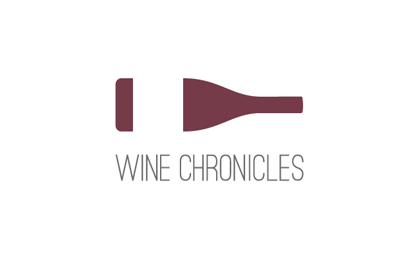 Wine Chronicles
Wine Chronicles
My favourite onelogist in S.Rhone is Philippe Cambie. The man with the Midas touch.